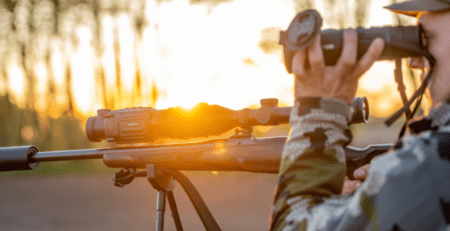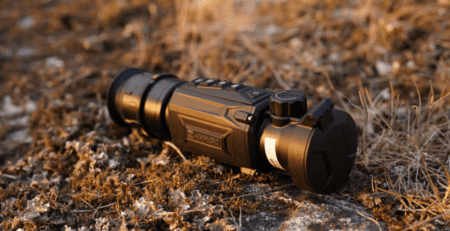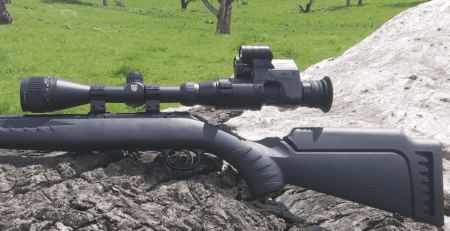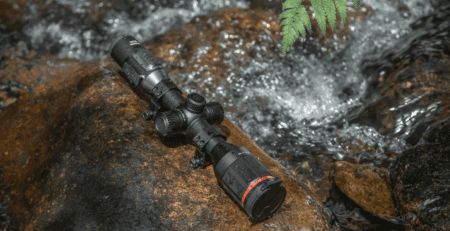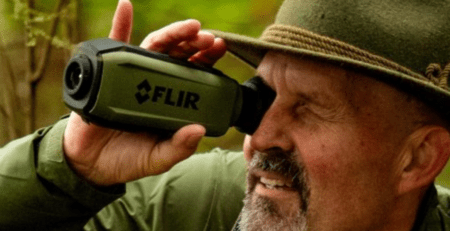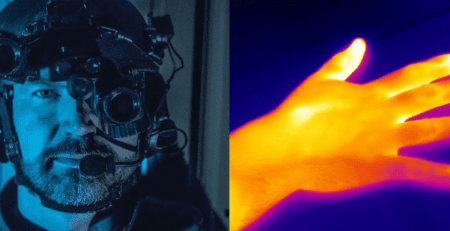What Makes A Good Thermal Monocular?
Thermal Monoculars are fast becoming the most popular night optic on the market. Within the past decade the thermal monocular has very closely followed the mobile phone in terms of development.
The units have been developed with higher specifications and more functional features. The design has become more compact and durable and the overall quality has risen substantially. The major area in which the two technologies differ is price. While mobile phone technology has climbed in price thermal imaging has dropped, bringing thermal into the realm of the affordable personal device.
So what makes a good thermal monocular?
Microbolometer
The microbolometer is the sensor inside the unit which detects temperature patterns. The resolution of this sensor is measured in pixels. Like a TV the higher the amount of pixels, the greater the level of detail you will see.
The FLIR Scout III 640, for example, has a resolution of 640 pixels x 512 pixels with a grand total of 327 680 pixels. The American made unit uses the Tau2 core and is the top of the range for hunters, and outdoor enthusiasts. The high resolution allows the Scout III 640 to gain an extremely detailed image day or night.
Refresh Rate
In basic terms, the refresh rate of a thermal monocular is the frequency at which the image is refreshed on screen. This rate is expressed in ‘Hertz’ with common refresh rates around 9Hz, 30Hz, 50Hz and 60Hz. The higher the ‘Hertz’, the more often the image is refreshed.
If you are looking for a recreational camera (such as the FLIR Scout TK) to use to explore the outdoors, track down game or just have fun with, then 9Hz will be all you need. Without the need to scan or change views quickly, a lower refresh rate is more than suitable. However, when it comes to higher quality models, the refresh rate becomes increasingly important for the user’s experience. We recommend 30Hz or higher for anything above amateur use, such as contract shooting or professional hunting.
Lens Size
The lens of a thermal monocular plays a major in role determining the maximum detection distance of a thermal monocular. Detection distances can vary between 90 meters to over 1.5km! Lens sizes can vary from 9mm up to 100mm and the general rule of thumb is ‘Bigger is Better’.
While the lens being larger may increase the detection distance of the unit, it also narrows the Field of View (FOV). For example a 38mm lens will give you a FOV of 19.5’ x 14.7’ while a 50mm lens cuts FOV down to 7.5’ x 5.6’. With this in mind it is important to select a monocular that not only gives you an adequate detection distance, but also suits your needs in terms of Field of View.
It is also important to consider the image quality versus distance offered by lens sizes and sensor resolution. It is important to consider what is right for your personal applications and make an informed decision.

Durability, Reputation & Warranty
Not all thermal monoculars are created equal. Although the cost of the units has come down significantly over the last few years, they are still a sizable investment. It is important to choose a unit that will not only give you excellent picture quality, but is also durable and reliable.
A thermal camera should still be fully functional 10+ years after purchase date as long as it is properly cared for. Many manufacturers claim long life, but be sure to shop around for products with substantial warranties. FLIR, for example, offer a 10 year warranty on the sensor in all their thermal imaging devices.
The reputation of a manufacturer is also important when purchasing a thermal monocular. There are a few things to consider about a brand before making a purchase:
- Do they honor their warranty policy?
- Do they have a Distributor in Australia as a point of contact?
- Is the warranty global or limited to the country of purchase?
I hope that this brief guide has been able to help you get a better understanding of what makes a good thermal monocular. Make sure to keep learning about night optics through our articles such as Gen 1, Gen 2 & Gen 3 Night Vision: What Is The Difference?
As always, please feel free to leave any questions or comments below or contact us directly via email or phone!






